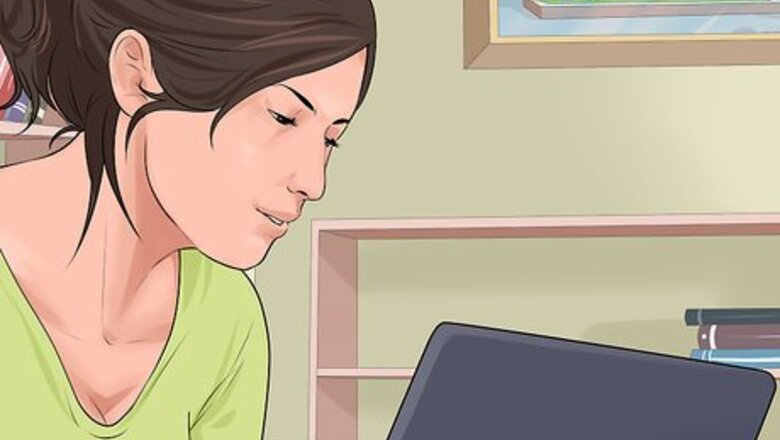
views
X
Trustworthy Source
National Health Service (UK)
Public healthcare system of the UK
Go to source
If you are concerned that you or a loved one has social anxiety, there are some common signs that you can watch for.
Understanding SAD
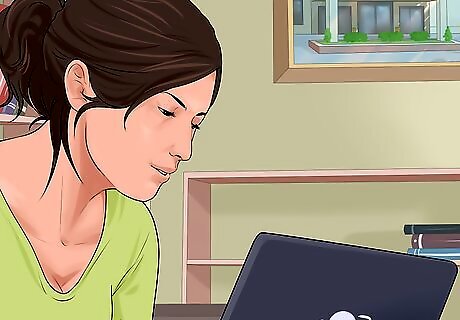
Learn the symptoms of SAD. Knowing some of the most common symptoms of SAD will help you to recognize the disorder. People who suffer from SAD have an excessive fear of situations in which they may have to face strangers or be observed and examined by others. These situations include public speaking, presentations, meeting new people, and having social interactions. Someone who has SAD might respond to such a situation by: experiencing intense anxiety avoiding the situation exhibiting physical symptoms of anxiety, such as blushing, shaking, or vomiting

Differentiate between normal anxiety and social anxiety. Everyone experiences anxiety sometimes. A new situation or situation involving public speaking, interaction or being observed by others might involve a little anxiety and fear, which is normal. This types of anxiety helps you prepare for the upcoming situation. The problem arises when this fear and anxiety is overwhelming, makes you unable to perform, is irrational, and/or forces you to avoid or escape the situation. Normal anxiety includes the following: apprehensiveness before a public appearance, speaking or performance; shyness or awkwardness when meeting strangers; or unease when beginning a new conversation or social interaction. Social anxiety includes the following: extremely high anxiety and fear of failure, physical symptoms like sweating, trembling, and shortness of breath; negative thoughts regarding the performance; excessive and exaggerated feelings of fright and terror while facing new people; extreme anxiousness and a need to avoid them at any cost; and refusing a social gathering invitation because you are afraid you will be embarrassed or rejected.
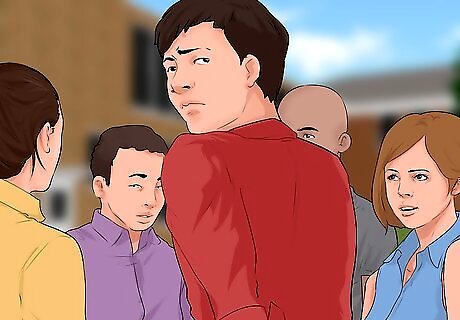
Consider your risk factors for SAD. Some people are at a higher risk of developing SAD due to the experiences, genetics, and personality. If you have any of these risk factors, it does not mean that you will get SAD, but you have a higher risk for developing SAD. If you already have SAD, being aware of your risk factors may help you to understand what might have caused it. Bullying. Humiliation or childhood trauma such as being bullied can create social phobias and fears. Also, the feeling of not fitting in with peers may lead to social anxiety. Hereditary factors. Growing up with a parent who showed signs of social phobia as well. Often when a caregiver struggles in social situation in creates an environment that avoids social events leading to limited development of social skills and avoidant behaviors of their children. Shyness. Shyness is related to one’s personality and is not a disorder, but many people who have social anxiety are shy as well. But keep in mind that social anxiety is much more severe than “normal” shyness. People who are just shy do not suffer the way that people with social anxiety disorder do.
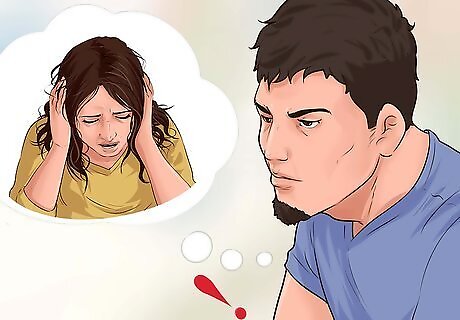
Learn the relationship between SAD and other mental health problems. Some mental health problems are associated with SAD and others may even be caused or intensified by SAD. It is important to be aware of the other mental health issues that can be confused with SAD or related to SAD. SAD and Panic Disorder. Panic disorders refers a person that has a physical reaction to anxiety that can often feel like a heart attack. SAD is different from Panic Disorder but both disorders can coexist. One of the reasons the two disorders get confused is because people with panic disorder often avoid social situations to prevent having a panic attack around people who might see and judge them. People with SAD avoid social situations due fear. SAD and Depression. Depression is a common coexisting diagnosis with SAD because people with SAD tend to limit their contact with other people. This creates a feeling of being alone and can cause or intensify depression. SAD and Substance Abuse. There are higher rates of alcoholism and other substance abuse among people with SAD. Around 20% of people with SAD suffer from alcohol abuse. This could be due to the anxiety reducing effects of alcohol and drugs in social situations.
Recognizing SAD in a Social Setting
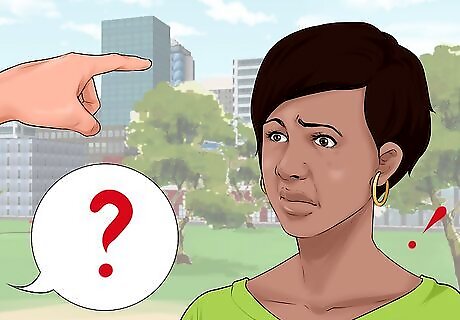
Pay attention to fear. Do you become filled with terror at the thought of being put on the spot at a social event? Are you afraid that people will judge you? This fear can come from being asked a personal question in front of others, or just being invited to a social gathering of any kind. If you have SAD, this fear would dominate your thoughts and causes you to feel panicked. For example, if you have SAD, you may feel a sense of terror when a friend asks you a question in front of people you don’t know. You may worry that people will judge you for what you say and be too afraid to say anything as a result.

Note when you become self-conscious in a social setting. A common symptom of SAD is a feeling of self-consciousness that dictates how a person interacts with others. People with SAD are always afraid that they will embarrass themselves or get rejected in some way. If you feel extremely self-conscious when in a social setting, before a social interaction, or before a public talk, you may have SAD. For example, if you feel like you have nothing of value to say when you are discussing a subject that you are actually passionate about, you may have social anxiety. Instead of contributing your ideas and opinions, you may be obsessing over thoughts that the other people don’t like how you are dressed or that they don't think you are intelligent.
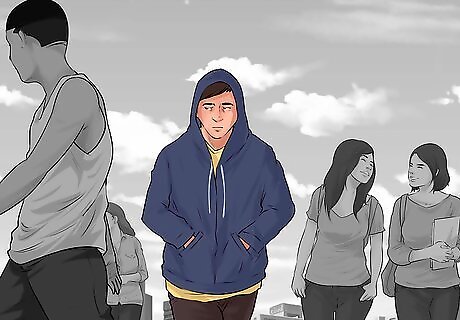
Consider whether you avoid social settings. A common trait of someone with SAD is avoiding instances where they may be forced to speak or interact in a social setting. If you go out of your way to avoid social interactions or having to speak in front of others, you may have social anxiety. For example, if you are invited to a party but you refuse to go because you are too nervous about hanging out with other people, you may have social anxiety.
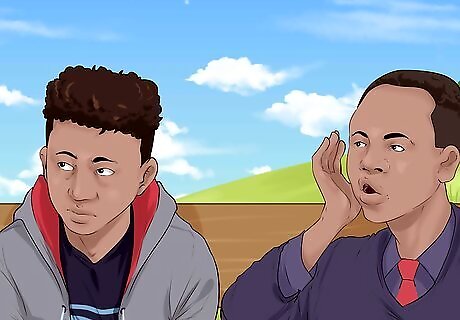
Think about how often you stay quiet during discussions. People with SAD generally fade to the back of discussions because they are too nervous about voicing their thoughts. They are afraid that what they say will displease others or warrant ridicule. If you often find yourself staying silent during conversations out of fear, this may indicate that you have SAD. For example, if you are in a discussion with others, do you voice your opinions or slowly shrink to the back, avoiding eye contact with others?
Recognizing SAD at School or Work
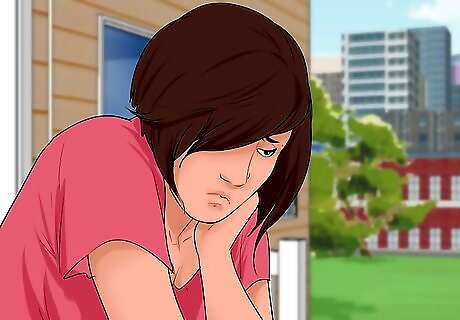
Keep track of when you begin worrying about an upcoming event. People with SAD will begin worrying about a speech they have to give or social event they are attending weeks before the actual event occurs. This worrying can cause digestive problems, like a loss of appetite, and problems with sleeping. While it is normal to get nervous the day or morning before a speech, it is generally a sign of SAD if you are nervous for weeks before the event. For example, if you have a speech coming up in two weeks and you’ve already written out what you’re going to say, you should feel pretty prepared. However, someone with SAD might be kept up at night worrying about the presentation for the whole two weeks before he actually has to give it.
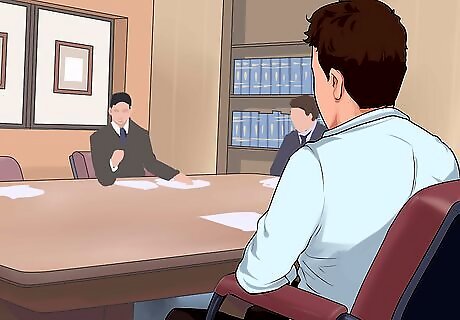
Consider how often you participate in class or during meetings. A common sign of social anxiety is an unwillingness to participate in class or during meetings. This means not raising your hand to ask or answer a question, or choosing to work on an individual project rather than a group one. People with SAD will often avoid working in groups because they become too concerned about what their team members think of them. For example, if you avoid raising your hand to ask a question in class, even if you don’t understand the material, this could be a sign of social anxiety.
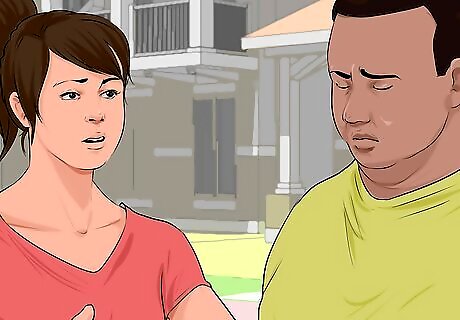
Notice if you have any physical symptoms of anxiety. People with SAD often display physical, as well as emotional, symptoms of anxiety. These physical symptoms can include blushing, sweating, trembling, shortness of breath, and numbness. For example, if you get called on in class and know the answer, but instead of answering you blush, begin to sweat, can’t seem to breathe, you may have social anxiety.
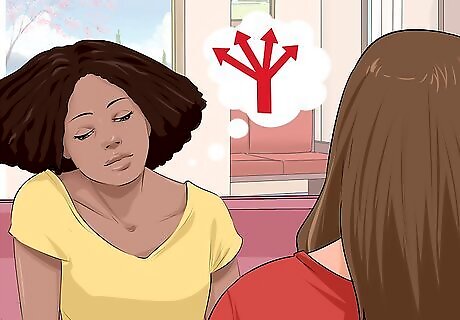
Consider whether you ever change your opinion to avoid having to voice your thoughts. People with SAD will often change their opinions so that they do not have to justify their thoughts by speaking out loud. They want to avoid feeling alienated or questioned at all costs. For example, imagine you are working on a group project and someone suggests an idea, but you have a better one. You may choose to go with the other person’s less efficient idea simply because you don’t want to be put on the spot and have to explain your idea.
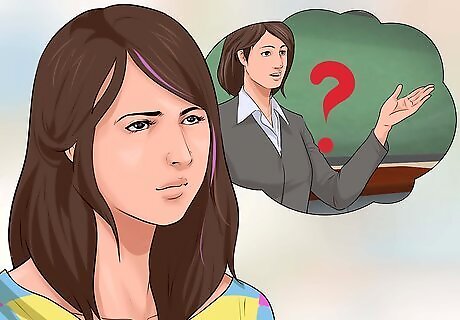
Think about how you feel about public speaking. People with SAD will go out of their way to avoid giving presentations, speeches, and other public speaking instances where all eyes will be on them. Consider how you feel about public speaking and how often you have gone out of your way to avoid it. In these instances, you may be thinking: what if I forget what I have prepared? What if I stop in the middle? What if my mind goes blank during the session? What will everybody think? Everybody will laugh at me. I will be making a fool of myself.
Identifying SAD in Children
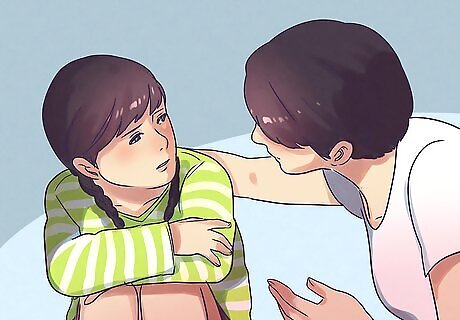
Be aware that children can develop SAD. SAD often presents in adolescents, but it can present in children as well. Like adults with social phobia, children with SAD are so afraid of being judged or criticized that they may try to find ways to avoid certain types of social situations. It is not just a "phase" or bad behavior. Children with SAD might also make statements that can indicate their fears. Common statements include “what if statements” such as, What if I look stupid? What if I say something wrong? What if I mess up?

Distinguish between SAD and shyness in children. Similar to SAD in adolescents and adults, childhood SAD is more than just shyness. It is normal for a child to feel anxious in new situations, but after exposure to the new situation and getting support from parents and peers, they can succeed. SAD interferes with a child’s ability to be social. Children with SAD may do things like avoiding school, not answering questions in class, avoiding parties, etc. Children who have SAD suffer from an extreme fear of criticism by their peers as well as adults. This fear often interferes with day-to-day activities because children will do things to avoid the anxiety producing situation. Some children will cry, scream, hide, or do other things to avoid an anxiety producing situation. Some children also have physical reactions to anxiety such as shaking, sweating, and shortness of breath. These symptoms must last for more than six months to be considered SAD. Children who are just shy may sometimes try to avoid activities or have mild anxiety about certain situations, but the anxiety is not as extreme or as long lasting as it is with SAD children. Shyness will not interfere with a child’s happiness in the same way that SAD will. For example, it might be hard for a child to give a book report, but a shy student can still do it when necessary. A child with SAD might refuse to do the assignment due to extreme fear or even skip school to avoid it. This might be misinterpreted as acting out or being a bad student, but the root cause is fear.
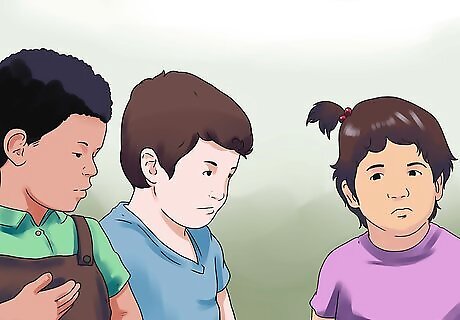
Examine how your child interacts with others. SAD will often make children extremely uncomfortable, even fearful, of interacting with adults and with other children. Even a simple conversation with a relative or playmate could cause crying, tantrums, or withdrawal. Your child may express fear of new people and be unwilling to meet new friends or go to social gatherings where there might be unfamiliar people. They may also refuse or try to get out of participating in events that involve other people, especially in large numbers, such as field trips, play dates, or after-school activities. In severe cases, your child may experience anxiety in seemingly simple social interactions, such as asking a peer to borrow a pencil or answering a question in a store. He may display symptoms of panic, such as heart palpitations, sweating, chest pain, shaking, nausea, shortness of breath, and dizziness.
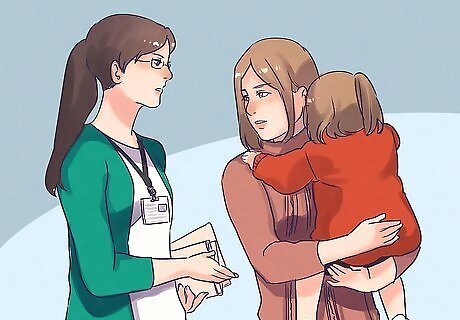
Ask your child's teacher about their performance. Children with SAD may have trouble concentrating or participating in class because they are terrified of being judged or failing. Activities that require interaction or performance, such as giving a speech or speaking up in class, may be impossible for them to perform. Sometimes, SAD co-occurs with other disorders, such as attention deficit/hyperactivity disorder (ADHD), or learning disorders. It is important to get your child evaluated by a medical or mental health professional so that you know exactly what the problem is and how to address it.

Consider the challenges of identifying SAD in children. Recognizing SAD in children can be difficult since children might struggle to express their feelings and might act out in response to the fear.Children with SAD might have behavior issues or begin missing school in order to cope with SAD. In some children, fear associated with SAD might even be expressed through outbursts or crying.
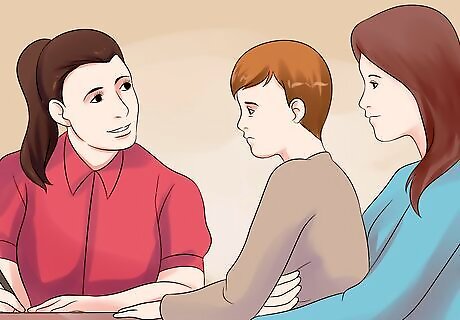
Find out if your child is being bullied. Harassment may be the cause of your child’s social anxiety or it may be making it worse. Since falling victim to bullying is a major risk factor for developing social anxiety disorder, there is a good chance that your child may be dealing with some form of harassment. Talk to your child’s teacher and any other adults who watch your child around other children to find out if your child might be getting bullied and make a plan to intervene.
Managing SAD
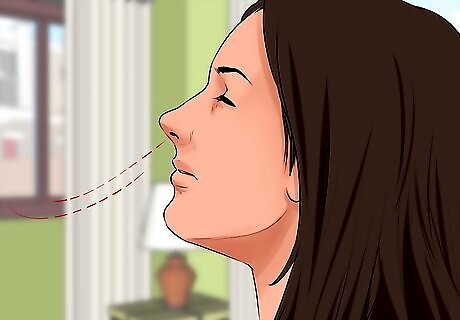
Practice deep breathing. During periods of stress, you may experience increased heart rate, sweating, tension of muscles, and often shallow breathing. Deep breathing can help to decrease those negative symptoms of stress by helping to regulate your nervous system. Start by placing one hand on your cheek and one hand on your stomach. Take a deep breath in through your nose, counting to 7 as you breathe in. Then, exhale through your mouth, counting to 7, while tightening your stomach muscles to exhale all of the air. Repeat the process 5 times with an average of one breath per 10 seconds.
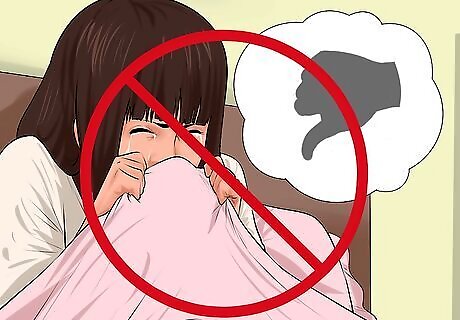
Put a stop to your negative thoughts. Negative thoughts can make social anxiety worse, so it is important to stop yourself when you have a negative thought. The next time you have a negative thought, don’t just let it go by. Take a moment to analyze the thought and try to see what its flaws are. For example, a negative thought might be, “I am going to make a fool of myself in front of everyone when I give this presentation.” If you find yourself thinking something like this, ask yourself, “Do I know that I will make a fool of myself?” and “If I mess up, does that mean that people will think I’m dumb?” Your answers to these questions should be “No” and “No” because you cannot know what people will think or do. The more likely outcome is that you will do a good job and no one will think you are dumb.
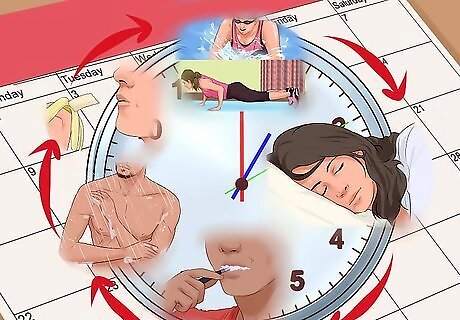
Take care of yourself. Taking good care of yourself can help you to deal with your social anxiety. Eating well, getting enough sleep, and exercising regularly can help you feel better mentally and physically. Make sure that you are eating well, sleeping enough, and getting regular exercise to feel your best. Eat a balanced diet that include plenty of fresh fruits and vegetables, whole grains, and lean protein. Get between 7-9 hours of sleep per night. Exercise for 30 minutes three times a week. Limit caffeine and alcohol intake.

Consider seeing a mental health therapist for help. Working through severe anxiety on your own can be hard. If you or a loved one has SAD, consider getting help from a licensed mental health professional. A mental health professional can help you to identify the root of your social anxiety an work through these issues. You might also consider attending a behavioral therapy group for people with social anxiety. These groups can help you to build your confidence and learn cognitive- behavioral techniques that can improve your ability to handle difficult situations.

Ask your doctor about medications. Medication alone cannot cure social anxiety, but it can be useful in some situations. Some medications may be more effective than others for your situation, so it is important to talk to your doctor about your symptoms and options. Common medications for SAD include: Benzodiazepines such as Xanax; Beta Blockers such as Inderal or tenormin; Monoamine Oxidase Inhibitors (MAOIS) such as Nardia; Selective Serotonin Reuptake Inhibitors (SSRI’s) such as Prozac, Luvox, Zoloft, Paxil, Lexapro; Serotonin-Norepinephrine Reuptake Inhibitors (SNRIS) such as Effexor, Effexor XR, and Cymbalta.
Managing SAD in Children

Learn why early treatment is important. The average age of onset for SAD is 13 years old, but it can occur in younger children too. It is linked to the development of depression and substance abuse in adolescents. Therefore, it is extremely important to seek a doctor's advice if you think your child or teen may have SAD.
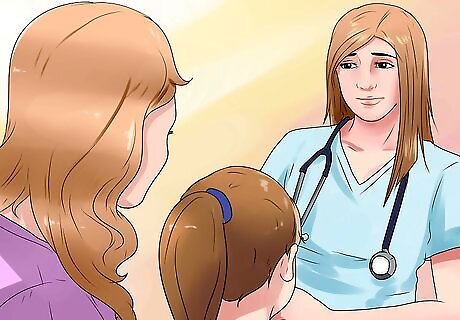
Take your child to see a therapist. A therapist can be very helpful in determining the source of your child's anxiety, which will help you manage it. The therapist can also help your child through exposure therapy, in which the child gradually faces his fears by being exposed to them in a controlled situation. The child's therapist can also offer you advice on how to help your child. Another popular treatment is cognitive-behavioral therapy (CBT), which can help the child learn to identify and manage negative or unhelpful patterns of thinking. Your child's therapist may even suggest group therapy. This can be helpful for your child, as he will see that he is not alone in his fears and that others struggle just like he does. A family therapist can help you communicate your support for your child and work with him to manage his anxiety. This type of therapy is especially helpful if the child's anxiety is causing other family difficulties.
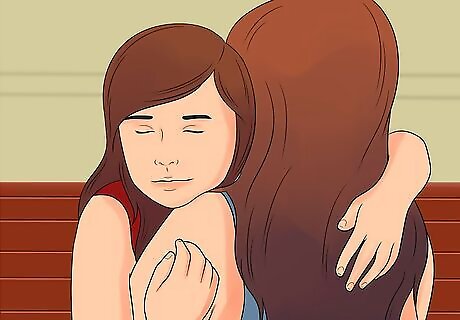
Support your child. If you are worried that your child has SAD, seek professional help to support your child. Avoid forcing your child to address his shyness such as pushing him to perform or forcing him into social situations that create anxiety. Do what you can to help your child feel more comfortable in social situations. Make sure that you acknowledge your child’s feelings. Model confidence for your child, such as by being relaxed in social situations. Help your child learn social skills, such as by making friends, shaking hands, making complaints etc.
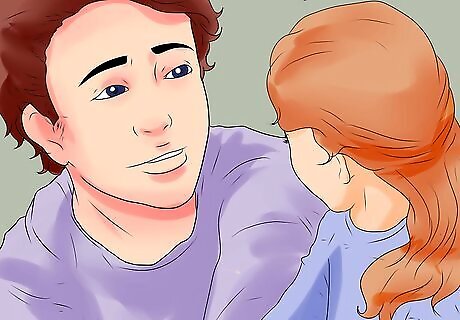
Help your child cope with anxiety. If you child has SAD, it is important to find ways to help your child cope with anxiety. There are several ways that you can help your child cope with anxiety and overcome some of his social anxiety. Some of the ways you can help your child include teaching your child how to do breathing exercises, helping your child restructure negative thoughts, providing a calming cue, and offering gentle encouragement. Teach your child to calm down by taking slow deep breaths. Show your child how to practice deep breathing and then instruct your child to use this technique any time he or she feels anxious. Help your child restructure his negative thoughts. For example, if your child says something like “I am going to mess up my book report tomorrow!” respond with something like, “If you practice really well, you will have a better idea of how you are going to give your book report and you will do a good job.” Provide your child with a picture to act as a calming cue. For example, if your child is especially nervous about his book report, you can give your child a small picture of yourself and instruct him to hold it near the top of the page. That way, your child can pretend he is just reading the book report to you. Offer gentle encouragement rather than forcing your child to participate in activities that make him or her anxious. For example, if your child is not comfortable with participating in a game with some other children, don’t push him to participate. But if your child does choose to participate, offer some quiet praise and then shower your child with praise when you are away from other people.
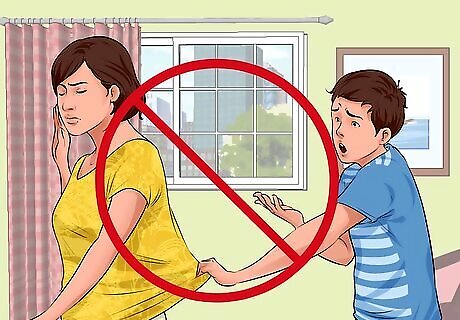
Do not simply avoid stressful situations. While it may be tempting to protect your child from situations that cause him stress or anxiety, this could actually make his anxiety even worse. It is more helpful for your child to learn how to manage his responses to stressful everyday situations, with your support. Instead, remind your child that he has successfully survived stressful situations in the past, and he can do it again.

Ask your doctor about medications. If your child’s anxiety is severe or does not improve, you may consider talking to your child’s doctor about medications that might help. For some children, SSRIs (selective serotonin reuptake inhibitors) may be effective at alleviating the anxiety produced by SAD. Commonly prescribed SSRIs for childhood SAD include citalopram (Celexa), escitalopram (Lexapro), fluoxetine (Prozac), and paroxetine (Paxil). Venlafaxine HCI (Effexor) is another commonly prescribed anti-depressant, but it is an SNRI (serotonin and norepinephrine reuptake inhibitor).
















Comments
0 comment